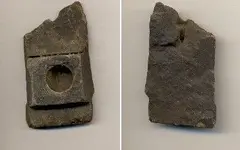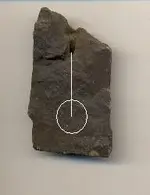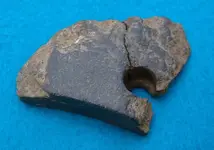$zero,
I have no idea what you're asking! None of the holes are cone shaped. It's obvious that the bowl was drilled with a stone drill (approx 1/2") but I've been unable to determine (even after discussing it with archaeologists) how the holes for the stem were drilled. There are two different size holes in the stem....going (naturally) from larger to smaller with the larger hole being approximately 3/8ths and the smaller hole going into the side of the bowl around 1/8th. One of the archaeologists opined that the stem holes were made by hand-twirling a wooden shaft using water and sand. I don't subscribe to this theory due to the fact that after breaking through the side of the bowl the stem drilling continued for about 1/4". One would assume that with all the labor intensive hand drilling the operator would stop as soon he broke through the wall of the bowl.
Thanks for your interest. Larry






